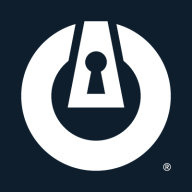

ThreatLocker Zero Trust Endpoint Protection Platform and Twingate both enhance cybersecurity but focus on different areas. ThreatLocker seems to have an upper hand with its detailed control over application usage, whereas Twingate has a better approach for network access and connectivity.
Features: ThreatLocker offers application whitelisting, ringfencing, and storage control, ensuring robust security at the endpoint level. Twingate simplifies remote access, providing a secure connection without a VPN and enhancing network flexibility.
Ease of Deployment and Customer Service: ThreatLocker is known for straightforward installation and effective support, facilitating quick implementation. Twingate allows seamless deployment with minimal disruption, and its customer service aids rapid adoption and integration, ideal for businesses seeking simple solutions.
Pricing and ROI: ThreatLocker provides competitive pricing with security investment returns by reducing breach risks. Twingate's flexible subscription models boost productivity with cost efficiency, offering long-term ROI benefits. ThreatLocker might involve a higher initial investment, while Twingate offers attractive pricing, especially for remote access efficiency.
| Product | Market Share (%) |
|---|---|
| ThreatLocker Zero Trust Endpoint Protection Platform | 0.5% |
| Twingate | 0.5% |
| Other | 99.0% |


| Company Size | Count |
|---|---|
| Small Business | 32 |
| Midsize Enterprise | 4 |
| Large Enterprise | 3 |
ThreatLocker Zero Trust Endpoint Protection Platform offers robust endpoint security through application control and allowlisting, safeguarding servers and workstations from unauthorized software execution.
ThreatLocker Zero Trust Endpoint Protection Platform provides extensive application control with features like ring-fencing and selective elevation, ensuring meticulous execution management. Offering learning mode and extensive support, it integrates threat detection and activity monitoring to enhance compliance, reduce costs, and bolster cybersecurity through alerts and approvals. Despite its strengths, there are areas for improvement in training flexibility, policy updates, and interface enhancements, along with challenges in handling non-digitally signed software. Deployed across environments, it works well with existing cybersecurity instruments for real-time threat prevention.
What are the top features of ThreatLocker?ThreatLocker Zero Trust Endpoint Protection Platform is widely implemented to safeguard IT infrastructures against unauthorized access and application use. In sectors where data security is paramount, this platform enables users to prevent unauthorized software installations and control device applications, ensuring real-time threat prevention and compliance with industry regulations.
Twingate is a cloud-based network security platform that offers secure, zero-trust access to corporate applications and resources. Its primary use case is to provide remote access to employees, contractors, and partners, allowing them to work securely from anywhere. Twingate's most valuable functionality is its ability to create secure access policies based on user identity, device, and network context. This enables organizations to enforce granular access controls, reducing the risk of data breaches and insider threats.
By leveraging Twingate, organizations can improve their security posture and reduce the IT burden of managing traditional VPNs. It also helps organizations to comply with regulatory requirements, such as GDPR and HIPAA, by providing a secure and auditable access solution.
We monitor all Network Access Control (NAC) reviews to prevent fraudulent reviews and keep review quality high. We do not post reviews by company employees or direct competitors. We validate each review for authenticity via cross-reference with LinkedIn, and personal follow-up with the reviewer when necessary.